SIGN (anime): Difference between revisions
MysteryCorgi (talk | contribs) No edit summary |
MysteryCorgi (talk | contribs) mNo edit summary |
||
| Line 7: | Line 7: | ||
[[File:Sign_main_image.jpg|250px|right|alt="Promotional Image for SIGN featuring Tsukasa and Aura. The lights of skyscrapers can be seen in the distance. It appears to be nighttime."|BeeTrain Promotional Image]] | [[File:Sign_main_image.jpg|250px|right|alt="Promotional Image for SIGN featuring Tsukasa and Aura. The lights of skyscrapers can be seen in the distance. It appears to be nighttime."|BeeTrain Promotional Image]] | ||
'''''.hack//SIGN''''' (pronounced "dot hack sign") is a Japanese anime television series that aired from April to September 2002.<ref>[https://en.wikipedia.org/wiki/.hack//Sign Wikipedia]</ref> The events of the series were set in an alternate history and took place in the then-future of 2010. The show follows Tsukasa, a player character who finds himself trapped in an online game called The World. As Tsukasa tries to adjust to the situation, his plight catches the attention of several other players, who try to uncover the mystery behind his predicament and help him find a way out. The show was an early entry of the .hack franchise, which tells a cohesive story over the course of various multimedia releases. .hack//SIGN was notable for its unique premise and its exploration of deep themes such as identity, escapism, and interpersonal connections. <br/> | '''''.hack//SIGN''''' (pronounced "dot hack sign") is a Japanese anime television series that aired from April to September 2002.<ref>[https://en.wikipedia.org/wiki/.hack//Sign Wikipedia]</ref> The events of the series were set in an alternate history and took place in the then-future of 2010. The show follows Tsukasa, a player character who finds himself trapped in an online game called The World. As Tsukasa tries to adjust to the situation, his plight catches the attention of several other players, who try to uncover the mystery behind his predicament and help him find a way out. The show was an early entry of the .hack franchise, which tells a cohesive story over the course of various multimedia releases. .hack//SIGN was notable for its unique premise and its exploration of deep themes such as identity, escapism, and interpersonal connections. <br/> | ||
The series was directed by Kōichi Mashimo and produced by studio Bee Train. 26 episodes were aired on TV Tokyo, while additional OVA episodes were made available through home media releases. As the first anime title for the series, the release was timed to work in conjunction with the release of the '''[[Games Tetralogy]]''' as an introduction to the setting of project .hack. <br/> | The series was directed by Kōichi Mashimo and produced by studio Bee Train. 26 episodes were aired on TV Tokyo, while additional OVA episodes were made available through home media releases. As the first anime title for the series, the release was timed to work in conjunction with the release of the '''[[Games Tetralogy]]''' as an introduction to the setting of ''[[project .hack]]''. <br/> | ||
=Synopsis= | =Synopsis= | ||
==Plot== | ==Plot== | ||
Revision as of 16:33, 17 April 2023
Lua error: Internal error: The interpreter has terminated with signal "11".


.hack//SIGN (pronounced "dot hack sign") is a Japanese anime television series that aired from April to September 2002.[1] The events of the series were set in an alternate history and took place in the then-future of 2010. The show follows Tsukasa, a player character who finds himself trapped in an online game called The World. As Tsukasa tries to adjust to the situation, his plight catches the attention of several other players, who try to uncover the mystery behind his predicament and help him find a way out. The show was an early entry of the .hack franchise, which tells a cohesive story over the course of various multimedia releases. .hack//SIGN was notable for its unique premise and its exploration of deep themes such as identity, escapism, and interpersonal connections.
The series was directed by Kōichi Mashimo and produced by studio Bee Train. 26 episodes were aired on TV Tokyo, while additional OVA episodes were made available through home media releases. As the first anime title for the series, the release was timed to work in conjunction with the release of the Games Tetralogy as an introduction to the setting of project .hack.
Synopsis
Plot
Is it a game? Or is it a world? .hack//SIGN the anime series… “The World” is immersive virtual gaming environment of the future. Millions of players log on each day to test their skills in virtual adventures and battles. But when reality and virtual reality collide, a whole new adventure unfolds. .hack//SIGN boasts character designs by famed illustrator Yoshiyuki Sadamoto (Neon Genesis Evangelion and Wings of Honneamise), an engaging and immersive storyline scripted by Kazunori Itō (Ghost in the Shell and Patlabor), and directed by Kōichi Mashimo (Noir and Irresponsible Captain Tylor).
Main articles: SIGN Episodes
Setting
Main articles: SIGN Setting
Characters
Main articles: SIGN Characters
| Tsukasa | Mimiru | Bear | Subaru | Silver Knight | Macha |
|---|---|---|---|---|---|
 |
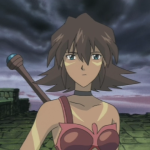 |
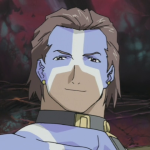 |
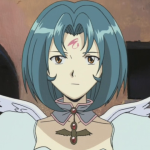 |
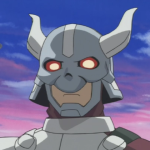 |
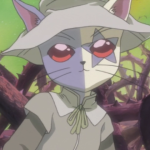
|
| Sora | BT | Crim | A-20 | Helba | Balmung |
|---|---|---|---|---|---|
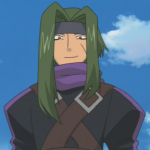 |
 |
 |
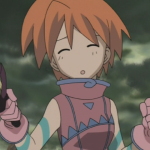 |
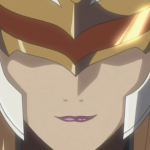 |
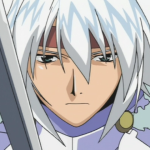
|
Production
Staff
Main articles: SIGN Credits
.hack//SIGN was directed by Koichi Mashimo, the founder and CEO of Bee Train, the studio which produced the anime.[2] He also did Editing (off-line), screenplay, script, story board, and sound director work for .hack//SIGN. Bee Train also produced the Liminality, Gift, Dusk, and Roots anime. The score was composed by Yuki Kajiura. This was the second time she worked with Mashimo, after doing the score for Noir. She went on to do music for other Bee Train titles, including other .hack titles (Liminality OST, Opening theme for Roots and Ending theme for DUSK) as well as the "Girls with Guns" trilogy, made up of Noir, Madlax and El Cazador de la Bruja.
Media
Main articles: SIGN Music
References
| |||||||||||||||||||||||||||
